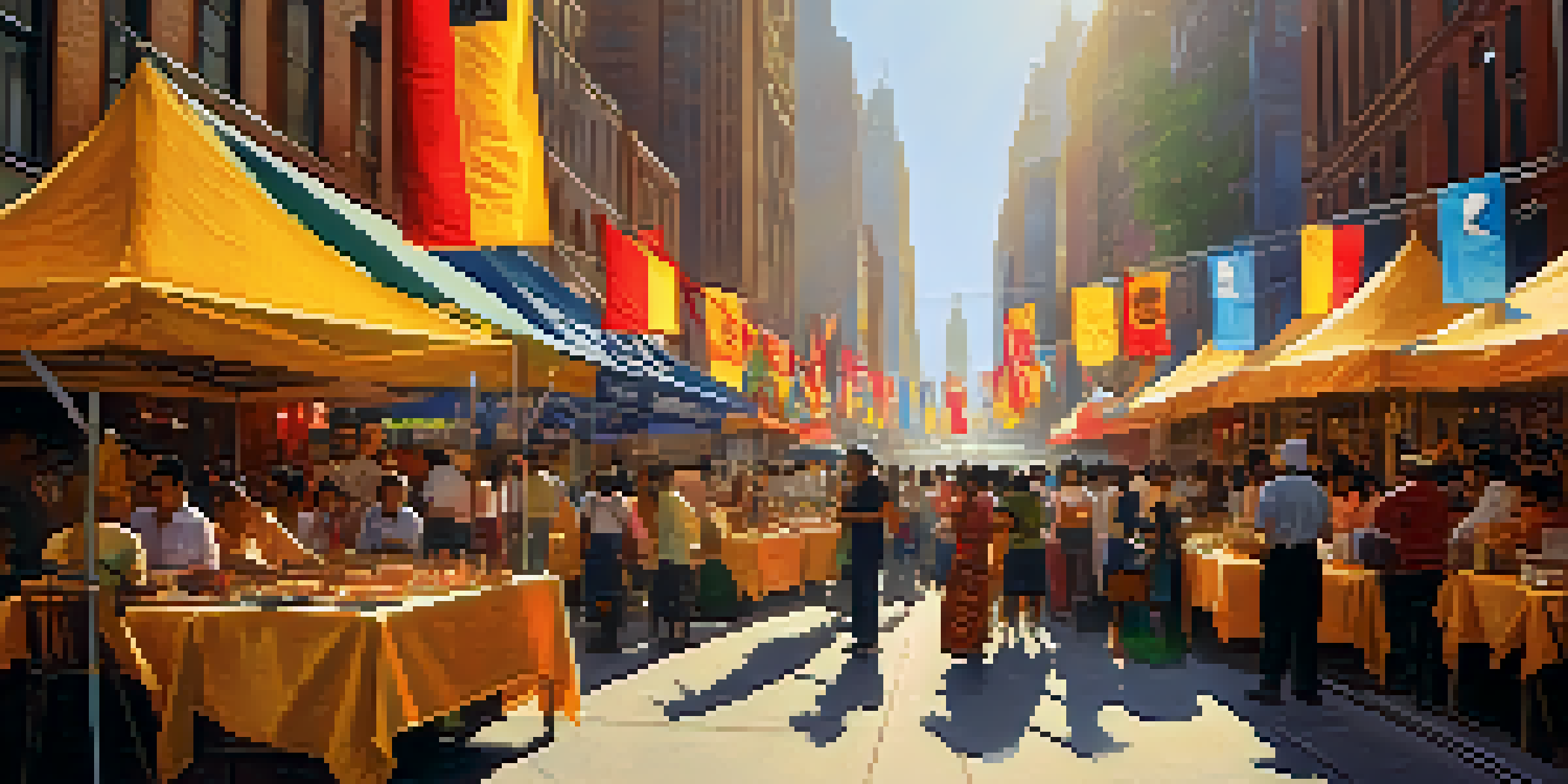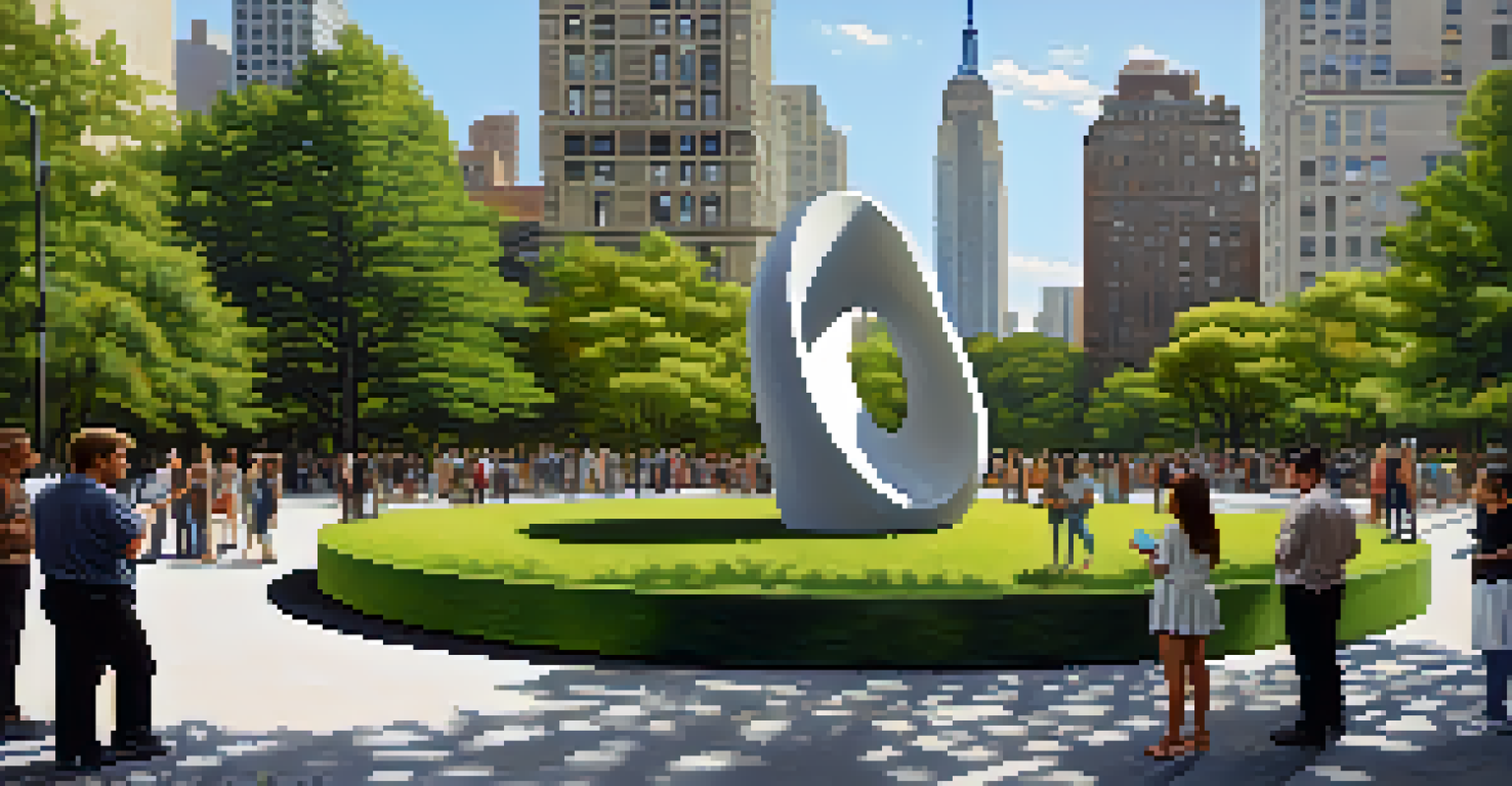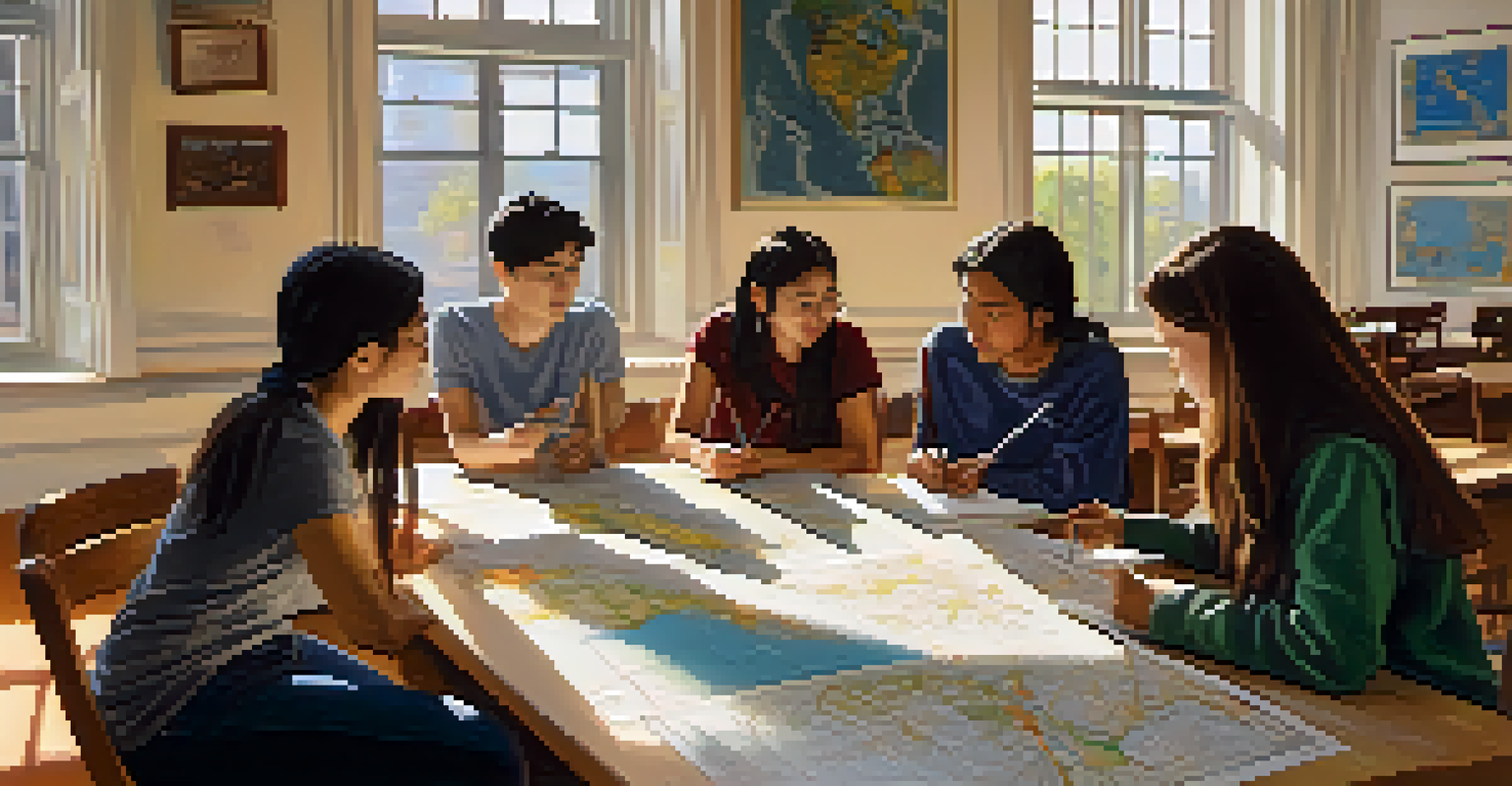Cultural Diplomacy: NYC's Role in Fostering Global Ties

Understanding Cultural Diplomacy and Its Importance
Cultural diplomacy refers to the use of culture to foster international relationships. It goes beyond traditional diplomacy by engaging people on a cultural level, promoting mutual understanding and respect. This form of diplomacy is vital in today's globalized world, where cultural exchanges can bridge divides and foster peace.
Culture is the most powerful weapon of the world. It can change people’s lives and influence them in ways that political or economic measures can never achieve.
In essence, cultural diplomacy enables nations to share their values, traditions, and ideas, creating a dialogue that transcends borders. For example, art exhibitions, film festivals, and music events can spark conversations that might not occur through political channels. This approach emphasizes the human connections that lie at the heart of international relations.
As we navigate an increasingly interconnected world, cultural diplomacy becomes a key strategy for addressing global challenges. By fostering understanding and collaboration among diverse cultures, we can work together more effectively to tackle issues such as climate change, social justice, and economic inequality.
New York City: A Cultural Melting Pot
New York City is often called a 'melting pot' due to its rich tapestry of cultures. With residents hailing from every corner of the globe, NYC embodies the essence of cultural diversity. This unique characteristic allows the city to serve as a natural hub for cultural diplomacy, where various traditions coexist and flourish.

In this vibrant environment, cultural institutions like museums, theaters, and galleries play a pivotal role. They not only showcase local talent but also host international artists, creating a platform for cross-cultural dialogue. For instance, events such as the Tribeca Film Festival highlight films from around the world, fostering appreciation for different narratives and perspectives.
Cultural Diplomacy Fosters Unity
Cultural diplomacy utilizes cultural exchanges to build mutual understanding and peace among nations.
Moreover, the city's neighborhoods, each with its own distinct cultural identity, offer countless opportunities for cultural exchange. From Little Italy to Chinatown, every community contributes to the city's overall vibrancy, making NYC a focal point for cultural diplomacy efforts.
Key Institutions Promoting Cultural Diplomacy in NYC
Several key institutions in New York City actively promote cultural diplomacy. The United Nations, for example, serves as a global platform for dialogue and cooperation among nations, integrating cultural initiatives into its mission. This organization emphasizes the significance of culture in achieving sustainable development and peace.
Art is the most beautiful of all lies; it is the most effective weapon of cultural diplomacy.
Additionally, cultural organizations such as the Asia Society and the American Museum of Natural History host events and exhibitions that promote intercultural understanding. These institutions not only educate the public but also facilitate conversations that can lead to collaborative efforts between countries. Their work exemplifies how culture can be a powerful tool in international relations.
Furthermore, NYC's vibrant arts scene, including Broadway and Off-Broadway productions, showcases diverse stories and experiences. These performances often address universal themes, resonating with audiences regardless of their backgrounds and fostering a sense of global community.
Cultural Festivals: Celebrating Diversity in NYC
Cultural festivals are a cornerstone of New York City's cultural diplomacy efforts. Events like the New York Film Festival and the Global Citizen Festival attract international participants and audiences, creating a space for cultural exchange. These festivals not only celebrate artistic expression but also promote social issues that resonate globally.
For example, the New York International Fringe Festival showcases independent theater from around the world, allowing diverse voices to share their stories. This celebration of multiculturalism fosters connections among people from various backgrounds, creating a sense of unity in diversity.
NYC as a Cultural Hub
New York City's diverse population and institutions make it a central point for cultural diplomacy and exchange.
Moreover, festivals often include workshops, panel discussions, and performances that encourage audience participation. By engaging the community in these events, NYC cultivates an environment of collaboration and understanding, further solidifying its role in cultural diplomacy.
The Role of Educational Institutions in Cultural Diplomacy
Educational institutions in New York City play a significant role in fostering cultural diplomacy. Universities such as Columbia and NYU attract international students, creating a diverse academic environment. These institutions help cultivate global citizens who understand the importance of cultural exchange and diplomacy.
Programs that promote study abroad opportunities and cultural immersion are essential in this context. They encourage students to engage with different cultures, fostering empathy and understanding. This experiential learning often leads to lasting connections that extend beyond the classroom.
Additionally, many universities host cultural events and lectures featuring international scholars and artists. These activities create platforms for dialogue and collaboration, further enhancing NYC's status as a leader in cultural diplomacy.
Art as a Language of Diplomacy
Art has long been considered a universal language, making it a powerful tool in cultural diplomacy. In New York City, public art installations and performances often address social issues, sparking conversations among diverse audiences. This ability to communicate complex ideas through art fosters understanding and connection across cultural boundaries.
For instance, initiatives like the Public Art Fund bring thought-provoking art to the city's streets, engaging residents and visitors alike. These installations serve as conversation starters, prompting discussions about identity, community, and global issues. Through these dialogues, art becomes a medium for building bridges between cultures.
Art Drives Global Conversations
Art serves as a universal language in NYC, facilitating important dialogues on social issues and cultural understanding.
Moreover, collaborations between artists from different countries can lead to innovative projects that reflect a variety of perspectives. These partnerships not only enrich the artistic landscape of NYC but also contribute to a greater understanding of global challenges and opportunities.
Challenges and Opportunities in Cultural Diplomacy
While New York City is a leader in cultural diplomacy, it faces challenges that require ongoing attention. Issues such as cultural appropriation, misrepresentation, and funding disparities can hinder the effectiveness of cultural initiatives. It's essential for stakeholders to approach these challenges thoughtfully to ensure that cultural diplomacy remains inclusive and equitable.
However, these challenges also present opportunities for growth and innovation. By fostering open conversations about cultural sensitivity and representation, NYC can create a more inclusive environment for cultural exchange. Engaging diverse voices in the planning and execution of cultural initiatives is crucial for addressing these concerns.

Ultimately, the evolution of cultural diplomacy in NYC relies on collaboration among artists, educators, and policymakers. By working together to navigate the complexities of cultural exchange, the city can continue to strengthen its role as a global hub for cultural diplomacy.